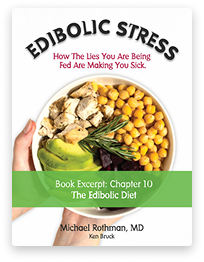Marijuana, its legalization, its legitimacy as medicine, and its surrounding controversies are constantly in the news. While the medical marijuana conversation seems current, cannabis or marijuana has been used medicinally in the United States since the mid-1800’s until 1937. The depth of use of cannabis for symptom relief was so common that cannabis was listed as a recommended treatment in the Merck Pharmaceutical Manual for many ailments. Back in 1912, that year’s edition of the manual indicated cannabis for migraine headaches. In the intervening two decades, many other indications for cannabis were discovered and cannabis was used for many indications:
- After Pain- see also Lactation (p.85)
- Ascites- see also Dropsy (p.90)
- Asthma (p.91)
- Diuretic in acute and Chronic Brights Disease with hematuria (p.94)
- Bronchitis (p.96)
- Cholera Asiatica (p.104)
- Chordee (p.105)
- Climacteric Disorder- see also Metrorrhagia (p.106)
- Corns (p.109)
- Coughs- see also Bronchitis, Pertussis, Phthisis (p.110)
- Cystitis- see also Bladder, Irritable Caloulus, Dysuria, Enuresis, Hematuria (p.111)
- Delirium (p.112)
- Diarrhea- see also Dysentery, Cholera (p.114)
- Dropsy- see also Ascites, Hydrocele, Hydrocephalus, Hydrothorax, etc. (p.116)
- Dysmenorrhea (p.117)
- Dyspepsia- see also Acidity, Biliousness, Flatulence, Gastralgia, Pyrosis (p.118)
- Dysuria- see also Vesical Sedatives, Bladder, Irritable, and Cystisis (p.119)
- Epilepsy- see also Hystero-Epilepsy, Convulsions (p.122)
- Exophthalmos (p.124)
- Gastralgia- see also Acidity, Dyspepsia, Gastrodynia, Neuralgia (p.127)
- Gastric Ulcer- se also Hematemesis (p.128)
- Gonorrhea- se also Chordee, Gleet, Orchitis, Rheumatism, Gonorrheal, Urethritis, Utheral Stricture, Vaginitis (p.130)
- Headache- see also Hemicrania (p.131)
- Hematuria (p.133)
- Hemacrania- see also Migraine (p.133)
- Hiccough (p.136)
- Hysteria (p.137)
- Impotence (p.137)
- Inflammation (p.138)
- Influenza (p.138)
- Insomnia- see also nervousness (p.139)
- Labor- see also Abortion, After Pain, False Pains, Post-Partum Hemorrhage, Lactation, Puerperal, Convulsions, Fever (p.141)
- Leucorrhea- see also Endometritis, Uterine Ulceration, Vaginitis (p.143-144)
- Mania- see also Delirium, Insanity, Puerperal Mania (p.145)
- Melancholia- see also Hypochondriasis, Hysteria, Insanity (p.145)
- Menorrhagia and Metrorrhagia- see also Amenorrhea, Hemorrhage, Uterine Tumors (p.146)
- Migraine- see also Hemicrania (p.147)
- Nephritis, Acute- see also Albuniuria, Bright’s Disease (p.148)
- Neuralgia- see also Gastralgia, Hemicrania, Hepatalgia, Otalgia, Ovarian Neuralgia, Sciatica, Tic Douloureux, etc. (p.149)
- Opium Habit (p.152)
- Pain (p.153)
- Ovarian Neuralgia (p.153)
- Dysmenorrhea (p.153)
- Neuralgia(p.153)
- Ovaritis(p.153)
- paralysis of bladder (p.93)
- Cholera (p.154)
- Tremor (p.154)
- Paralysis Agitans (p.154)
- Paralysis and Paresis (p.154)
- Sea Sickness (p.167)
- Tetanus (p.174)
- Tic Douloureux (p.175)
- Trismus (p.177)
- Uterine Cancer (p.180)
Despite wide stream use and acceptance by the medical community of cannabis (marijuana), nefarious political and economic constituencies led to the Marijuana Tax act of 1937. Despite its illegal status, cannabis continued to be used illegally for medicinal (and recreational) purposes over the last several decades. More recently, however, because of public demand for legal medical marijuana, various states have now allowed its use. California was the first state in the United States to legalize medical marijuana back in 1996. Now 23 states, including New Jersey, recognize and allow the use of cannabis as medicine.
With the recent legal use of medical marijuana much clinical research has been published which strongly supports medical marijuana use for various indications. Studies have shown that medical marijuana can be useful for decreasing various types of pain including chronic pain caused by cancer, pain resulting from various neurologic diseases and pain created by muscle spasticity. Cannabis studies also show utility in treating nausea and vomiting, weight loss, and wasting syndrome in chronically ill persons. Additionally medical marijuana has been shown to be efficacious in treating glaucoma and useful for helping to reduce the need for narcotic medications in persons who have used narcotic drugs long term. Some studies have shown benefit in treating fibromyalgia, post-traumatic stress disorder (PTSD), seizures, Crohn’s disease, and irritable bowel syndrome (IBS), to name a few.
How does Medical Marijuana Work?
The Endocannabinoid System
The myriad effects of cannabis are enabled through many pharmacologic and physiologic processes that utilize what is known as the Endocannabinoid SystemYour brain and nervous system contains many receptors for what are known as cannabinoids, chemicals that have cannabis-like effects. These receptors are part of what is known as the “endogenous cannabinoid system” (ECS). Your ECS is responsible for facilitating many functions in your body including eating, sleeping, relaxing, helping to eliminate painful memories, regulating pain, inflammation and immune system response, sleep-wake cycles, hormone balance, and much more.
There are two major types of cannabinoid receptors, CB1 and CB2:
- CB1 receptors are very abundant and are located throughout your nervous system. The CB1 receptors help modulate your mood, behavior, energy usage, heart function and sexual function, cognitive abilities, memory, perception, pain levels and muscle functioning.
- CB2 receptors are located mostly in your immune system and help regulate your immune response and inflammation. The binding of cannabinoids to their receptors stimulates your endogenous cannabinoid system (ECS) to do its job regulating many functions of your nervous system, immune system and hormonal system. CB1 activation, for example, reduces the effects of calcium and enhances the effects of potassium which then helps control the release of various “brain chemicals” like serotonin, gamma-aminobutyric acid (GABA), adrenaline, dopamine and many more.
- CB2 activation helps control your immune system and can reduce inflammation through numerous pathways that involve immune cells like neutrophils and macrophages and by reducing the production of proinflammatory chemicals known as cytokines.
A Brief Overview of the Cannabinoids
Cannabinoids are chemicals found in cannabis (and also endogenous cannabinoids) that have an effect on your endogenous cannabinoid system (ECS). There are actually hundreds of different cannabinoids found in the cannabis plant, which have various pharmacological effects. The two best-known cannabinoids are THC (delta-9-tetrahydrocannabinol) and CBD (cannabidiol):
- THC is present in varying quantities in the cannabis plant and when it is heated to a temperature of greater than 120 degrees centigrade (which equals 248 degrees Fahrenheit) is activated through a process known as decarboxylation. THC binds to both CB1 and CB2 receptors (CB1 more so than CB2) and is responsible for most of the psychoactive and pain relieving activity of cannabis. THC also binds to your serotonin, dopamine and NMDA receptors (and other receptors as well) and stimulates the production of your endorphins (endogenous opioids). THC also has many different anti-inflammatory effects.
- CBD (Cannabidiol) does not have any psychoactive effects, but has profound immune modulating and anti-inflammatory activity. It can help with pain, inflammation, nausea, anxiety, seizures, reduces neuroexcitotoxicity (and can therefore prevent brain and nerve damage).
Many new strains of cannabis are now being bred to have high levels of CBD (and low levels of THC) in order to take advantage of CBD’s therapeutic properties without causing the psychoactive effects of THC.
Cannabis contains almost 500 different chemical compounds, including terpenoids, flavonoids, phytosterols and cannabinoids. The amount of THC, CBD and other cannabinoids in any specific cannabis plant is a result of the particular strain of cannabis, techniques of cultivation and soil and climate conditions. The psychoactive effects, fragrance, potency, and all of the various therapeutic effects of cannabis are dependent on the relative amounts of these several hundred compounds. Consequently, each variety of cannabis offers you a unique therapeutic and psychoactive experience and ambience.
Endocannabinoids
Endocannabinoids (or endogenous cannabinoids) are molecules found in the human body (and most animals as well) that affect your ECS (endocannabinoid system). There are numerous endocannabinoids including:
- Anandamide –is chemically much different from THC but has been shown to bind to CB1 and CB2 receptors and shares many of the pharmacologic properties of THC.
- 2-arachidonoyl-glycerol –has more affinity for CB2 than CB1
- Palmitoyl-ethanolamide – more CB2 specific, capable of reducing inflammation and allergic responses
- Docosatetraenylethanolamide (DTEA) and Homo-gamma-linoenylethanolamide (HLEA) are similar to anandamide and affect mostly CB1 receptors
- Oleomide (also known as cis-9-octdecenoamide) –has actions similar to anandamide, but is thought to exert its effects independent of CB1 and CB2 receptors
Hypothesized Roles of the Endogenous Cannabinoid System (ECS)
Scientists and researchers speculate that the ECS has a widespread role in regulating many systems and functions in humans including central nervous system, immune system, gastrointestinal system, reproductive system and cardiovascular system.
- Learning and synaptic plasticity – activation of CB1 receptors controls the release of numerous neurotransmitters – the possibility exists that endocannabinoids act to affect brain development, learning, and the extinction of aversive memories.
- Pain – anandamide (an endocannabinoid) can inhibit pain receptors resulting in an analgesic effect. Other endocannabinoids have been shown to control dilation of blood vessels and inflammation
- Visual Perception – some studies have shown that cannabinoids alter thresholds of light detection and recovery from glare
- Neuroprotection – Palmitoyl-ethanolamide has been demonstrated to be elevated in anatomic sites subjected to neuronal damage and cell death in the brain. Anandamide has been shown to modulate the production of corticotropin releasing hormone – hence effecting cortisol levels and metabolic processes. Cannabinoids have also been found to protect neurons in culture from glutamate-induced excitotoxicity and from lack of oxygen. These substances are currently being tested as therapeutic agents in the treatment of neurodegenerative diseases such as multiple sclerosis and Parkinson’s disease. **Of note The United States government holds a patent on the use of CBD as a neuroprotective agent.
- Allergy and Inflammation – Endocannabinoids help immune cells communicate with nerve cells and blood cells affecting the acute immune response, keeping excessive inflammation in check. Anandamide may increase the production of prostaglandin E2 that can help prevent the spread of an excessive inflammatory response.
- Reproductive System – tissues of the reproductive system contain cannabinoid receptors and are able to synthesize and breakdown endocannabinoids.
Have You Read The Medical Marijuana Series by Dr. Michael Rothman?
In the corresponding blogs of this series, we discuss the role of cannabis, cannabinoids, and the endocannabinoid system in the treatment of chronic pain, anxiety disorders, cancer, multiple sclerosis, and Crohn’s Disease.
- Introduction of Cannabis and its History of Use in Medicine
- The Role of Cannabis, Cannabinoids and the Endocannabinoid System in the Treatment of Chronic Pain
- The Role of Cannabis, Cannabinoids and the Endocannabinoid System in Disorders of your Immune System – such as Cancer and Autoimmune Diseases
- The Role of Cannabis, Cannabinoids and the Endocannabinoid System in Anxiety Disorders
- Pharmaceutically derived Cannabis Extracts Now FDA Approved – Good News or Bad News for Medical Marijuana Patients?
- Pharmaceutical Agents that Affect the Endocannabinoid System, Better than Natural Cannabis?
A full list of references can be found here.
If you’d like to learn more about the benefits of medical marijuana or if you’d like to enroll in the New Jersey Medical Marijuana Program, schedule a consultation by calling (732) 268-7663 or request an appointment online.












